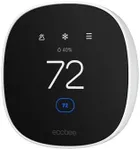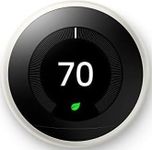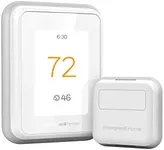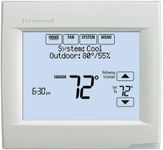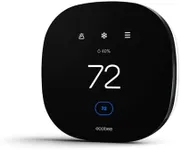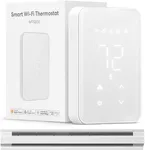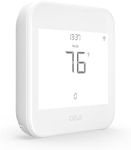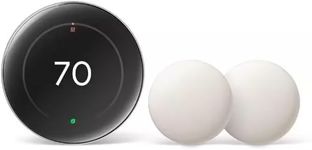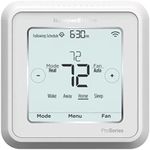Buying Guide for the Best Multi Zone Thermostat
Choosing the right multi-zone thermostat can greatly enhance the comfort and efficiency of your home. A multi-zone thermostat allows you to control the temperature in different areas or 'zones' of your home independently. This means you can customize the heating and cooling to suit the needs of each room, potentially saving energy and improving comfort. When selecting a multi-zone thermostat, it's important to consider several key specifications to ensure you get the best fit for your home and lifestyle.Number of ZonesThe number of zones a thermostat can control is crucial because it determines how many separate areas you can manage independently. If you have a large home with multiple rooms or floors, you might need a thermostat that supports more zones. Typically, thermostats can control anywhere from 2 to 8 zones. Assess the layout of your home and decide how many distinct areas you want to control separately. More zones offer greater flexibility but may require more complex installation.
Compatibility with HVAC SystemsCompatibility with your existing HVAC system is essential to ensure the thermostat can effectively manage your heating and cooling. Different thermostats are designed to work with various types of systems, such as central air, heat pumps, or radiant heating. Check your HVAC system's specifications and ensure the thermostat you choose is compatible. This information is usually available in the product manual or on the manufacturer's website.
Smart FeaturesSmart features can significantly enhance the functionality of your thermostat. These may include Wi-Fi connectivity, app control, voice control, and learning capabilities. Wi-Fi connectivity allows you to control the thermostat remotely via a smartphone app, which is convenient for adjusting settings when you're not home. Voice control compatibility with systems like Amazon Alexa or Google Assistant can add ease of use. Learning capabilities enable the thermostat to adapt to your schedule and preferences over time, optimizing comfort and efficiency. Consider which smart features are most important to you based on your lifestyle and tech preferences.
User InterfaceThe user interface of the thermostat affects how easy it is to use and program. Some thermostats have touchscreens, while others use buttons or dials. A clear, intuitive interface can make it simpler to adjust settings and program schedules. If you prefer a more hands-on approach, look for a model with a user-friendly design. If you are tech-savvy, a more advanced interface with detailed options might be appealing.
Energy EfficiencyEnergy efficiency features can help reduce your utility bills and environmental impact. Look for thermostats with energy-saving modes, scheduling options, and usage reports. These features allow you to optimize your heating and cooling patterns to save energy. If reducing energy consumption is a priority for you, choose a thermostat that offers robust energy management tools and insights.
Installation RequirementsInstallation requirements can vary significantly between models. Some thermostats are designed for easy DIY installation, while others may require professional help. Consider your comfort level with electrical work and the complexity of your HVAC system. If you prefer a straightforward setup, look for models with clear instructions and minimal wiring. For more complex systems, professional installation might be the best option to ensure everything is set up correctly.
